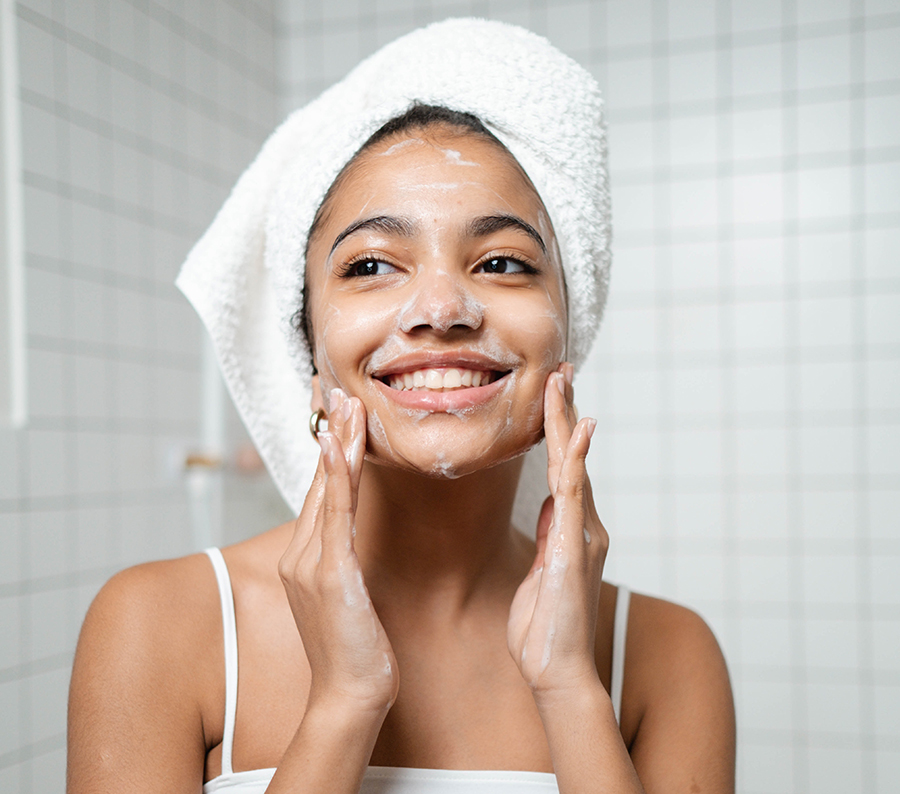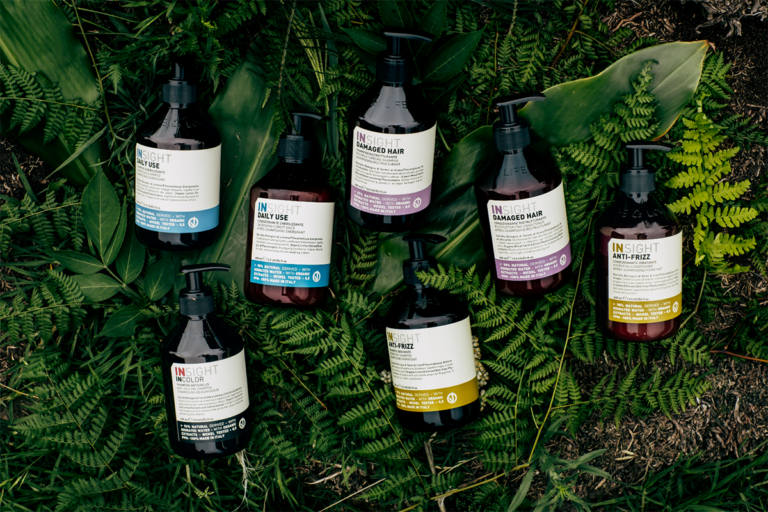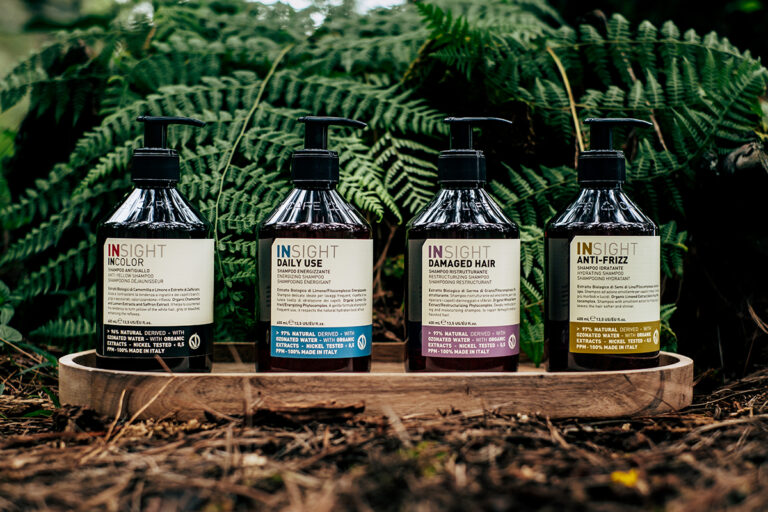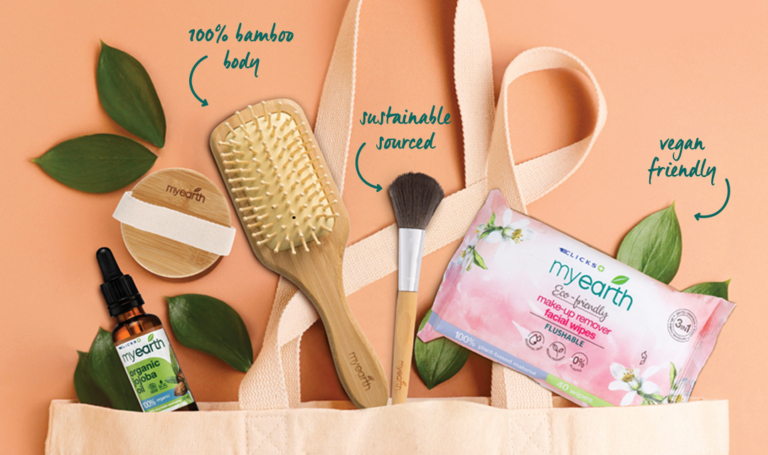
Chemical exfoliants are acids that get rid of dry and dead skin cells on the outer layers of the skin. Unlike their alternative, physical exfoliators, they do not contain any physical abrasives like seeds, kernels or microbeads that manually scrub the skin. Instead, they make use of fruit enzymes, alpha hydroxy acids (AHAs) or beta hydroxy acids (BHAs) to chemically remove dead skin cells.
Regular exfoliation ensures dead skin cells do not build up on the surface of the skin and cause congestion, blackheads or breakouts. It is also an essential step in your skincare regime to ensure smooth skin texture and to promote radiance.
Skincare experts generally advise using a chemical exfoliant on your face rather than a physical scrub, as the latter can create micro-tears in the skin (which may lead to inflammation). But before you rush off to get your hands on one, there are a couple of things you should consider. We chatted to Karen Bester, Medical Trainer at Lamelle Research Laboratories to get the lowdown on how chemical exfoliants work and how to know if they’re suitable for you.
What are some of the advantages of using a chemical exfoliator rather than a physical exfoliator?
With chemical exfoliation there is nearly an ‘intelligence’ to the exfoliation. The exfoliation ingredients used are generally chosen for their specific advantages and will nearly seek out the problem and do the work where needed. Beta Hydroxy acids, for instance, will penetrate blocked pores and will remove the congestion. Technology is also so advanced that they can be used very safely at home while also having a higher concentration product that is used in the in-office treatment setting.
Mechanical exfoliators will work were they are used. So if you focus your rubbing on your cheeks area you might miss an area on your forehead that needs to be exfoliated. Depending on the type of abrader used some mechanical exfoliation will also damage the skin and cause very little tears in the skin that need to heal and can actually cause more damage than good. When the right type of abrader is selected, at the correct concentration and particle size, it can in fact give a light exfoliation providing an immediately smooth and glowing skin – something that frequent users of mechanical exfoliation are seeking. The concentration, type and size of abrasive material needs to be carefully chosen.
In some cases, we also see that consumers will overdo it with the mechanical exfoliation. The no-pain-no-gain rule does not apply here. This causes irritated, inflammation skin. In the medical aesthetic skincare arena we use inflammation to correct skin challenges like scaring and lines and wrinkles. The challenge comes in where the skin is kept in a constant inflamed state. Skin is unable to repair itself is the inflammation is triggered 2-3 times per week when you exfoliate aggressively with a mechanical exfoliation. You are wanting a smoother feeling, healthy looking skin after using a mechanical exfoliator. Not red and irritated.
The advantage to any chemical treatment is that:
Specific ingredients can be chosen for specific skin challenges;
Safe and effective with regular use;
Can be chosen to support in-office treatments;
Comfortable treatments;
Quick application;
Low risk for irritation and injury of the skin – when manufacturer’s instructions are followed;
Science is continually improving ingredients to be better tolerated without challenging the superb effects;
No environmental challenges – plastic microbeads in mechanical exfoliators are polluting the ocean on some coastlines.
What are some of the different kinds of chemical exfoliants?
Salicylic acid can be modified to increase penetration into the pore to provide removal of congestions.
Alpha Hydroxy acids are used more for general exfoliation and hydration.
Azelaic acid is used for problematic skin and also to improve smoother healthier feeling skin.
Enzymes are also safe and effective in their ability to create exfoliation – even though they have a different classification they are still chemicals.
Will chemical exfoliators irritate dry or sensitive skin?
There are chemical exfoliators that are specifically developed to be safe on sensitive skin. It is important to check the formulation and manufacturer’s instructions for use though. Generally formulators will consider the safety on sensitive skin especially when products are intended for home use.
How often can you use a chemical exfoliator at home?
That would depend on the formulations and the ingredients used. In most instances chemical exfoliation is done every second or third day – so 2-3 times per week. Some products are designed to be used daily.
Are chemical exfoliators a good option for breakout-prone skins?
Chemical exfoliation is better for breakout prone skin than mechanical exfoliation – when the correct lipid soluble ingredients are used. Mechanical exfoliation will exfoliate the surface of the skin but is unable to manage the blockage in the opening of the pore.
How do you know which chemical exfoliant is best for your skin type?
Check in with your skincare therapist or read the manufacturer’s instructions and stick to their suggestions for use.
Products to try:

Sothys Gommage Exfoliant (R555.00)
This granule-free exfoliant refines the skin’s texture and eliminates dead surface cells to soften the skin. Oat flour’s high lipid content moisturises the skin while Xanthan Gum conditions the skin. Bee’s wax helps seal in skin’s surface moisture.
Available at select spas & salons.
Gatineau Peeling Expert Pro-Radiance Anti-Aging Gommage (R585.00)
A professional-strength enzymatic peeling exfoliator with powerful anti-ageing action. Massage in this menthol-infused cream in circular motions, and watch it buff away dead skin cells and impurities from the epidermis. Alternatively, leave to set for 20 minutes and use as an intensive peel-off mask. Blended with Sweet Almond Oil to plump wrinkles, and targeted Essential Oils to nourish and improve elasticity. For a smoother, more radiant complexion and immediate visible results to skin tone and texture.
Shop online here.
Healing Earth Tri-Enzyme Peptide Peel (R772.00)
This is a non-abrasive enzymatic peel that deeply exfoliates the skin through the action of enzymes. The addition of hyaluronic and alpha lipoic acid (anti-ageing super ingredients that fight sun damage and repair barrier function), create a healthy glow and boost absorption.
Shop online here.
Filorga Scrub & Mask Reoxygenating Exfoliating Mask (R805.00)
This is the first product of its kind we’ve come across. Scrub & Mask is both a mechanical and enzymatic scrub, combined with a reoxygenating mask. This unique combination deeply cleanses, exfoliates dead cells, tightens pores, smoothes the skin and enhances radiance. Perlite Microspheres provide a mechanical exfoliating action, helping to remove dead skin cells, while Protease provides an enzymatic action that stimulates the natural skin shedding process.
Shop online here.
Lamelle Cathepzyme 1 (R600.00)
A gentle home exfoliation system that contains a self-neutralizing patented ingredient that enhances natural exfoliation in the outer layers of the skin as it produces targeted cell exfoliation, helping to improve radiance without irritation. Suitable for more sensitive skin types with early ageing, acne, or hyperpigmentation.
Shop online here.



